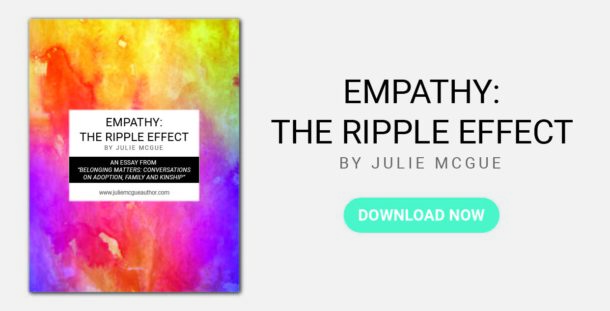What is your Catch-22?

Julie McGue
Author
In Tara Westover’s memoir, Educated, she chronicles life growing up as a Mormon in Clifton, Idaho to survivalist parents. The youngest of seven, Westover details how loosely she was home-schooled, her parents fear of doctors and hospitals, and her mother’s holistic methods of treating the family’s health and injuries. The author is taught to read by an older brother and enters college without a high school diploma. After finishing her graduate degree, Tara returns home and reveals stunning truths to her parents: while growing up, an older brother repeatedly abused her emotionally and physically. Her parents refuse to believe her and suggest that she is under the influence of Satan. This causes a family rift. In order to be welcomed back into the family fold, Tara must recant her story.
Tara Westover was caught in a catch-22.
A catch-22 is a problematic situation for which the only solution is denied by a circumstance inherent in the problem, or it is a situation presenting two equally undesirable alternatives (Merriam-Webster).
Where does the term catch-22 come from?
Catch-22 originated as the title of a 1961 novel by Joseph Heller. The novel’s catch-22 was as follows: a combat pilot was crazy by definition (he would have to be crazy to fly combat missions) and since army regulations stipulated that insanity was justification for grounding, a pilot could avoid flight duty by simply asking, but if he asked, he was demonstrating his sanity (anyone who wanted to get out of combat must be sane) and had to keep flying. Catch-22 soon entered the language as the label for any irrational, circular, and impossible situation (Merriam-Webster).
People find themselves in catch-22s all the time. You dent the car next to yours in the grocery parking lot. Do you leave a note on the windshield or drive off and save yourself a hassle? Your husband can’t stand your mother, but she is at risk for Covid if she stays in her nursing home. Do you bring her to live with you for the foreseeable future even though her presence will strain your marriage?
Here’s a personal tale. In 2010, I was 48 and connected to my birth mother through an intermediary. I was experiencing health issues and desired my birth family’s medical history. My outreach presented my birth mom with a catch-22. She had never told anyone about her unwed pregnancy or about the twins she placed for adoption. My existence was a long-held secret. To welcome me into her life, she would first have to tell her husband of thirty years, and then share the news with her large, extended family.
How does one extricate oneself from these dilemmas known as a catch-22?
One can continue to pretend, avoid, and perpetuate lies or mistruths, or one can muster the fortitude and courage to come clean and thereby heal from injustice and hidden pain, like Tara Westover did.
I’m not sure what advice to offer about the door ding example – I guess it depends on the severity of the mishap. In the case of the mother-in-law disliked by the husband, one must wrestle with their conscience, and perhaps choose the hardest right. In regard to my birth mother, she prayed, sought the intermediary’s counsel, and then disclosed the secret of my existence and her unwed pregnancy to my stepdad. We have all lived, mostly, happily ever after.
What’s your Catch-22?
“How does one extricate oneself from these dilemmas known as a catch-22?”

Snag my in-depth reference guide to best equip you for the journey ahead.



0 Comments